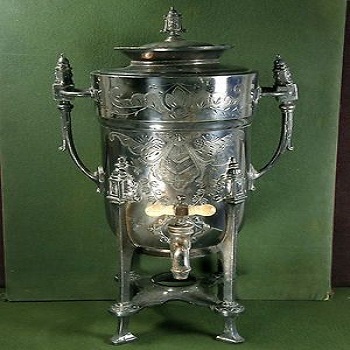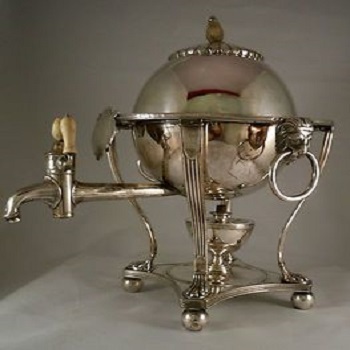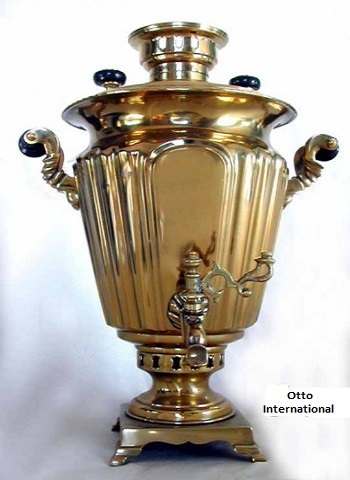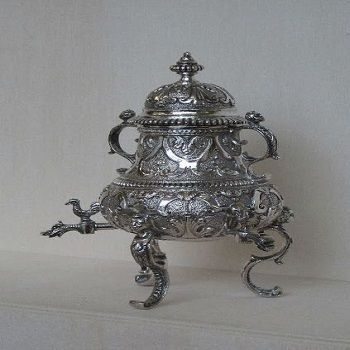18th Century Indian Samovar
MOQ : 24 Pieces
18th Century Indian Samovar Trade Information
- Minimum Order Quantity
- 24 Pieces
- FOB Port
- Mumbai
- Payment Terms
- Telegraphic Transfer (T/T)
- Supply Ability
- 500 Pieces Per Month
- Delivery Time
- 45 Months
- Sample Available
- Yes
- Packaging Details
- First Packing by butter paper, Second Packing Polybag Third Packing Bubble Packing Fourth Packing Cover with Thermocol 15mm sheet six side Fifth Packing with corrugated box 5 ply Sixth Packing with Master Carton with four piece of corrugated box packed.
- Main Export Market(s)
- Australia, North America, Eastern Europe, Western Europe, Middle East, Africa, Central America, South America, Asia
About 18th Century Indian Samovar
Product Description:
18th Century Indian Samovar. Beautiful and rare ample Krater shaped body sits atop a square base with thick pad feet. Rare and lavish palmate handles with original indigenous wood insulators. Graceful contour with thick interior walls indicative of early design and excellent craftsmanship.
Historical Significance
Originating in 18th century India, the samovar not only served as a functional tea vessel but also played a central role in hospitality and social gatherings. Owning such a piece offers a glimpse into the heritage and everyday life of past centuries.
Unique Craftsmanship
Each Indian samovar is carefully handcrafted from nin by skilled artisans. The intricate detailing and robust construction make these vessels both visually stunning and durable, highlighting the exceptional craftsmanship of the era. This handcrafted touch lends each samovar a distinct character.
FAQs of 18th Century Indian Samovar:
Q: How is the 18th Century Indian Samovar crafted?
A: The samovar is meticulously handcrafted by skilled artisans using nin, employing traditional techniques passed down through generations to ensure authenticity and high quality.Q: What is the primary function of the Indian Samovar?
A: Its primary function is as a traditional tea brewing vessel, designed to heat water and steep tea while maintaining the beverages temperature and rich flavor.Q: When was this Indian Samovar originally made?
A: This particular style of samovar originates from the 18th century, reflecting the customs and craftsmanship practices of that period in India.Q: Where is the samovar manufactured and exported from?
A: It is manufactured, supplied, and exported from India by trusted artisans and suppliers with expertise in traditional tea ware.Q: What is the process involved in brewing tea with the samovar?
A: To brew tea, water is heated in the samovar followed by the infusion of tea leaves. The vessels heat retention ensures that the tea remains hot and flavorful for extended periods.Q: How can owning an 18th Century Indian Samovar benefit collectors or users?
A: Owning this samovar provides a direct connection to Indian heritage, enhances tea rituals, and serves as a valuable decorative antique, making it ideal for collectors and traditional tea enthusiasts.
Tell us about your requirement

Price:
Quantity
Select Unit
- 50
- 100
- 200
- 250
- 500
- 1000+
Additional detail
Mobile number
Email
More Products in Coffee & Tea Urn Category
Amaizing Antique Silver Plate Tea Urn
Price Range 125.00 - 300.00 USD ($)
Minimum Order Quantity : 24 Pieces
 Send Inquiry
Send Inquiry








 Send Inquiry
Send Inquiry Send SMS
Send SMS Call Me Free
Call Me Free